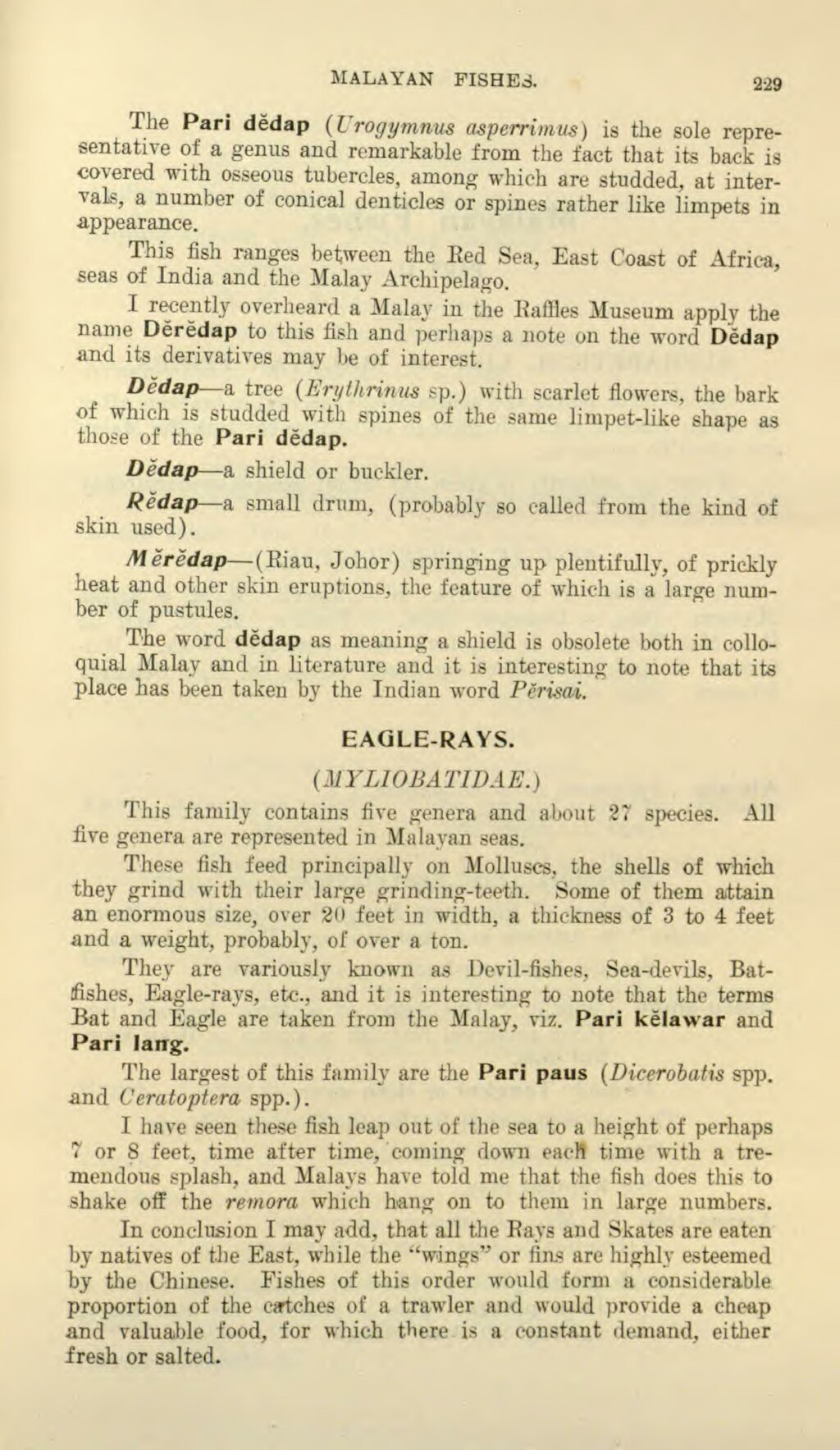The Pari dědap (Urogymnus asperrimus) is the sole representative of a genus and remarkable from the fact that its back is covered with osseous tubercles, among which are studded, at intervals, a number of conical denticles or spines rather like limpets in appearance.
This fish ranges between the Red Sea, East Coast of Africa, seas of India and the Malay Archipelago.
I recently overheard a Malay in the Raffles Museum apply the name Děrědap to this fish and perhaps a note on the word Dědap and its derivatives may be of interest.
Dědap—a tree (Erythrinus sp.) with scarlet flowers, the bark of which is studded with spines of the same limpet-like shape as those of the Pari dědap.
Dědap—a shield or buckler.
Rĕdap—a small drum, (probably so called from the kind of skin used).
Měrědap—(Riau, Johor) springing up plentifully, of prickly heat and other skin eruptions, the feature of which is a large number of pustules.
The word dědap as meaning a shield is obsolete both in colloquial Malay and in literature and it is interesting to note that its place has been taken by the Indian word Pĕrisai.
EAGLE-RAYS.
(MYLIOBATIDAE.)
This family contains five genera and about 27 species. All five genera are represented in Malayan seas.
These fish feed principally on Molluscs, the shells of which they grind with their large grinding-teeth. Some of them attain an enormous size, over 20 feet in width, a thickness of 3 to 4 feet and a weight, probably, of over a ton.
They are variously known as Devil-fishes, Sea-devils, Bat-fishes, Eagle-rays, etc., and it is interesting to note that the terms Bat and Eagle are taken from the Malay, viz. Pari kělawar and Pari lang.
The largest of this family are the Pari paus (Dicerobatis spp. and Ceratoptera spp.).
I have seen these fish leap out of the sea to a height of perhaps 7 or 8 feet, time after time, coming down each time with a tremendous splash, and Malays have told me that the fish does this to shake off the remora which hang on to them in large numbers.
In conclusion I may add, that all the Rays and Skates are eaten by natives of the East, while the "wings" or fins are highly esteemed by the Chinese. Fishes of this order would form a considerable proportion of the catches of a trawler and would provide a cheap and valuable food, for which there is a constant demand, either fresh or salted.
